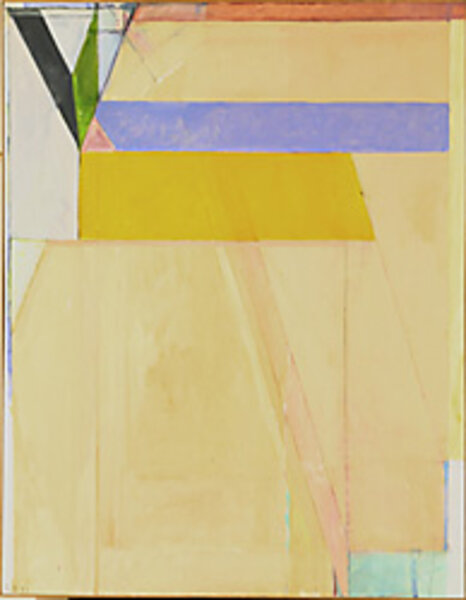Richard Diebenkorn's exploration of color
Loading...
Some critics believe that the rightly revered "Ocean Park" color field series of paintings by Richard Diebenkorn (1922-93) depicts abstracted interpretations of the view from the artist's studio in the town of Venice, near Santa Monica in southern California.
In fact, Diebenkorn once revealed that if there is any relationship between these abstract paintings and the outside world, it is derived from an unlikely source: a helicopter. In the early 1970s, not long after Diebenkorn had begun the "Ocean Park" pictures, he set out to gain a bird's-eye perspective of the California landscape. The grid and "path" pattern that he observed from a helicopter flight inspired later canvases in the series, though they are not "landscape" pictures as such.
Reminiscent of Mark Rothko's famous single-hued canvases, indebted to Piet Mondrian's geometric compositional scaffolding, and owing its genesis to a specific semiabstract work by Henri Matisse, this nonetheless original series amounts to a meditation on the impact of color and the possibilities of proportion as dictated by line.
Each painting in the series reflects different color moods and combinations. Some are powerfully organized around blue, others investigate red, but part of the fascination of the pictures is derived from the role played by subordinate hues.
The series consists of 140 canvases that Diebenkorn began to paint not long after he moved from San Francisco to Los Angeles in 1966, a move that started a sea change in his work from representational painting to a new kind of abstraction.
Shortly before he moved, Diebenkorn went to an exhibition in L.A. where he saw "Window at Collioure" (1914), a semiabstract work by French post-Impressionist Henri Matisse. This painting – an almost abstract depiction of an open French window that leads to a dark, rectangular exterior – produced the original spark for the "Ocean Park" exploration of rectangles of color.
Colors that echo the California landscape, not surprisingly, tend to be featured in Diebenkorn's work. Pictured here, an example of the series, "Ocean Park No. 38" (1971), is a study of yellow and its contrasts. Featured in the new exhibition, "Degas to Diebenkorn: The Phillips Collects" at the Phillips Collection in Washington, D.C., through May 25, this large canvas is focused on a central quadrilateral of solar yellow. The impact of the picture results from the artist's exploration of the relationship of yellow to – in this instance – French blue, sea green, leaf green, shades of peach, and black.
For Richard Diebenkorn, painting was about a life – long striving to achieve what he called "rightness," to bring a picture to the state where it should be. In the "Ocean Park" series, Diebenkorn undoubtedly arrived there.





